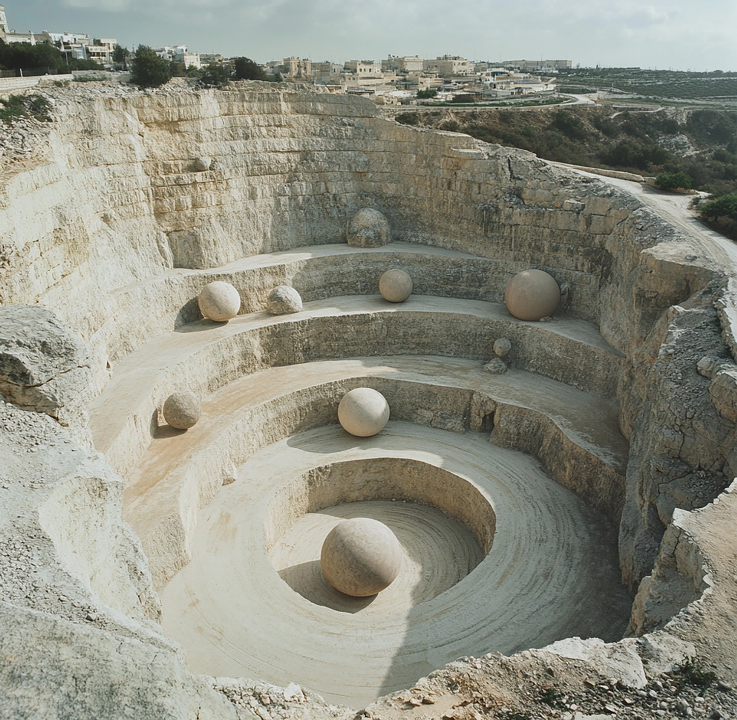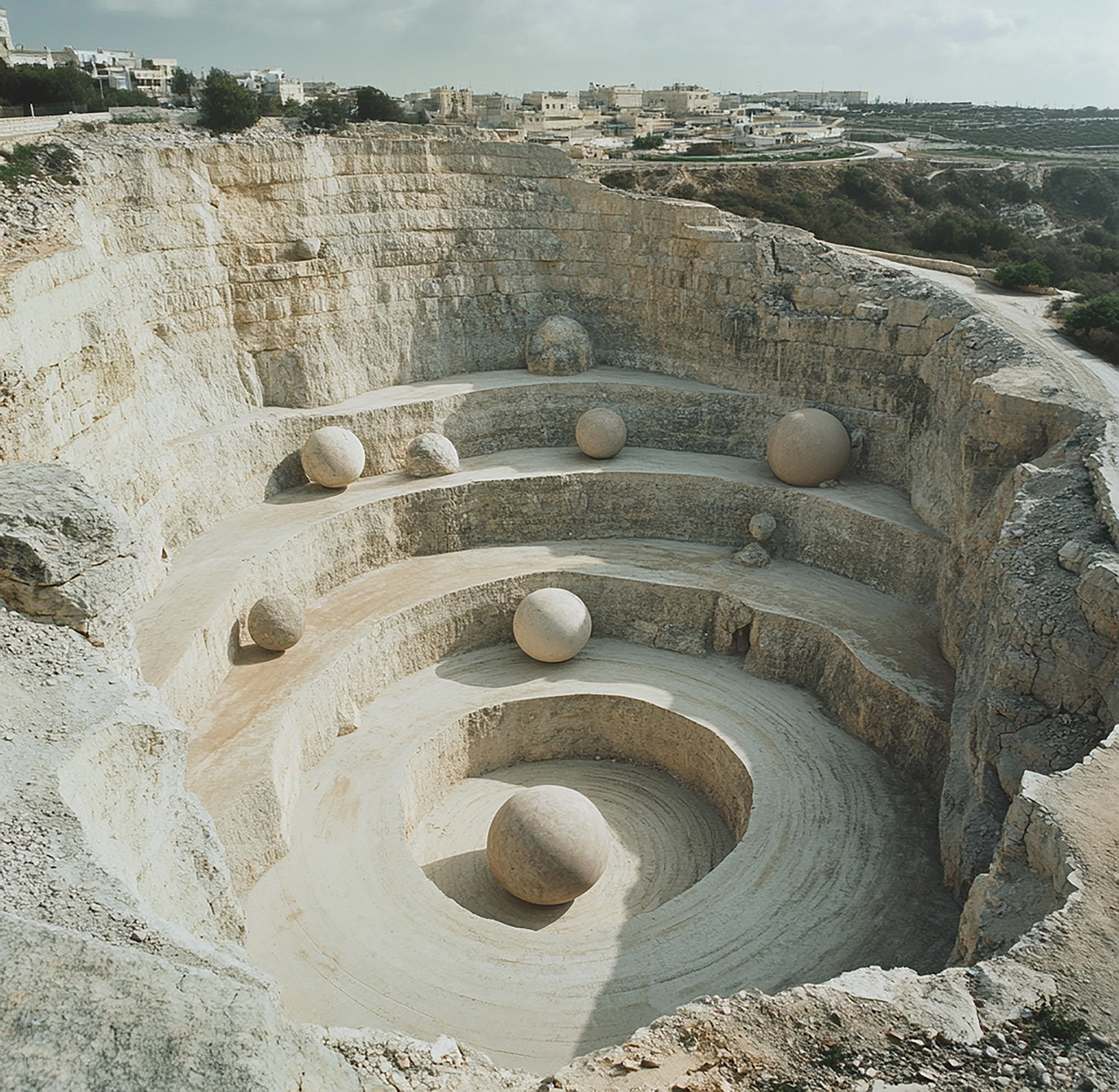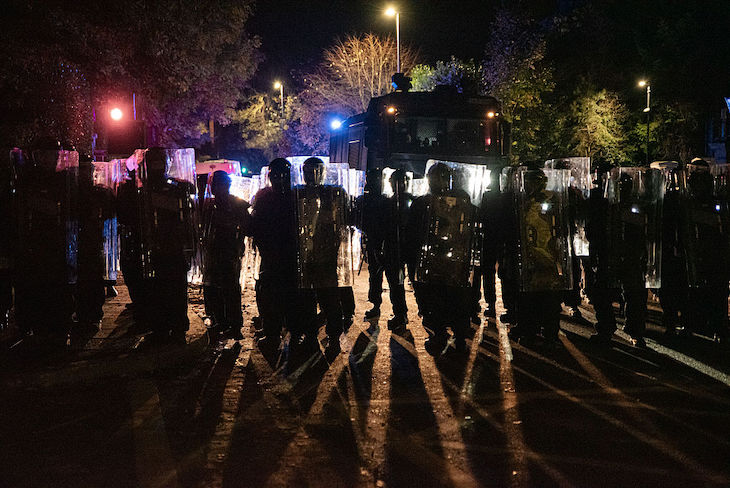
Unesco doesn’t hand out world-heritage status to absences, but if it did, there would be memorials all over the western world to our genius in erasing death from our consciousness.
We have airbrushed the deceased from our lives with a ruthless efficiency, banishing them to suburban cemeteries where they can spend eternity unvisited. Burials and cremations are today spiritless, functional affairs, death rituals perfunctory, public grieving rare, graves unworthily negligible or unspeakably vulgar, our wakes pretexts to get drunk and obliterate the memory of what just happened. I exaggerate, but not much.
The Maltese architect Anthony Bonnici wants to change all that. He wants to design death anew, create a funerary architecture that, if not quite as monumental and beautiful as the pyramids, would be more democratic. He is a member of a seven-strong team – including architects and designers, an art director, photographer, filmmaker and curator – that has just won the London Design Biennale medal for, as the judges put it ‘a remarkable contemplation of death and memory, a subject not often addressed through design’.
Called Urna, the project involves mingling the ashes of the cremated dead with limestone dust from defunct Maltese quarries to make beautiful, spherical urns. The spur for Urna was a 2019 decision by the Maltese government to legalise cremation. The reason for this move was to reduce the need for cemetery extensions – an important consideration given that the rocky Mediterranean island is only 27 by 14.5km in size.
The solution was all around them. ‘Malta is sedimentary rock. We walk on the dead all the time,’ says Urna’s artistic director, Matthew Attard Navarro. He tells me he was raised in a village close to a 6,000-year-old underground burial chamber called Hal Saflieni Hypogeum, one of Europe’s only known neolithic necropolises. ‘For me the dead were our neighbours and so death for me has always been part of life.’
The collective behind Urna were in particular drawn to the island’s obsolete quarries, seeing these beautifully carved caverns as both offering source material and outdoor stages to display their revolutionary designs for death. The architects would pour and compact the Globigerina limestone dust into compressed discs, which would then be stacked. Each disc might contain the remains of one person and you can add new layers until perfect spheres are formed. The results, with orbs of different dimensions arranged theatrically along terraces, effectively transform a quarry into a contemplative sculpture park.
In failing to honour the dead we not only disrespect them but impoverish the living
Bonnici says that what he and his colleagues have done in Malta can be cheaply replicated around the world. Urna’s research teams have studied how Syrian and Icelandic volcanic rock can also be harnessed. Perhaps in the future, your ashes might be mingled with Cotswold oolitic limestone, Highland granite or, here’s an idea, with siliceous sandstone, the material from which Stonehenge’s sarsens were constructed.
As I examined a model of one of these spheres at London’s Somerset House where Urna’s installation is on show, a woman told me its stepped layers reminded her of the rings of a tree. Good point. They reminded me of the step pyramid designed by the architect Imhotep for 27th-century bc pharaoh Djoser.
I ask Bonnici if these spheres might become commercial propositions, replacing graves, family vaults or columbaria. ‘Why not? It’s got to be better than some shitty little gravestone.’ Or an abject tin of a loved one’s ashes on the mantelpiece.
Bonnici tells me he imagines such urns being installed in parks. The Somerset House installation includes a film in which actors perform funerary rites in the Maltese quarries from which the urn materials are taken. There are very few public mourners any more, the filmmaker Stephanie Sant explains, ‘but we wanted to imagine what it would be like to introduce new rituals of death in memorialising the dead’.
The problem of what to do with the remains of the dead is hardly confined to Malta. And many architects and designers have turned their minds to a solution. Philippe Starck and Daniel Libeskind have designed funeral urns for Alessi. Sanchit Arora, of the architect firm Renesa, was impelled to design a new crematorium for New Delhi after the death of his grandmother. ‘When my grandmother passed away, we saw the sad situation of crematoriums in New Delhi. They are left dirty and uncared for,’ Arora recalled. ‘It just adds to your psychological distress during an already upsetting time.’
Arora proposed a grand new crematorium in New Delhi’s Green Park with majestic walkways, halls of remembrance, prayer halls, zones for water libations, lush greenery – all designed to be in accord with Hindu funerary rituals, aimed at both celebrating the dead and soothing the living. ‘When people die of old age in India, it is supposed to be a celebration. But there is a disconnect between the space and the celebration.’
What Arora sensed in Delhi is surely true the world over: in failing to honour the dead we not only disrespect them but impoverish the living. ‘It is through these rituals and these spaces that the rare intersection of life and death takes place, where the living are forced to encounter and contemplate the mortality and fragility of life while simultaneously putting them in touch with the sublime of the absolute,’ says Arora.
And then there’s the question of monuments to the long dead. Should they be left to rot or do we have responsibility to maintain them and, if so, why and for whom? I well remember visiting Père-Lachaise cemetery in Paris with Oscar Wilde’s grandson Merlin. He bemoaned how Jacob Epstein’s flying angel headstone had been twice castrated, how commemorative candles had scorched the front of his grandfather’s tomb and multilingual graffiti and lipstick kisses corroded it. ‘Each man kills the thing he loves,’ wrote Wilde. After death things can be even worse: the beloved’s grave might be defaced by boneheaded fans.
These are matters that architect Rem Koolhaas might muse upon as he restores the Mausoleum of Augusto and Piazza Augusto Imperatore in Rome and builds an allied museum to display archaeological finds in a project due to open next year.
They are also matters that should weigh heavy on Kathryn Gustafson, the architect responsible for the Diana, Princess of Wales Memorial Fountain in Hyde Park, as she and her practice disrupt the eternal resting places of Karl Marx, George Eliot, George Michael and Michael Faraday with landscaping works at Highgate Cemetery as part of a 25-year masterplan. ‘We wish,’ says a statement on Gustafson Porter + Bowman’s website, ‘to echo the grid of the surrounding city with new avenues of trees that frame meadows of graves, woodland bosques and mosaics of flowering perennials. When you reach the West Cemetery, the topography becomes steeper, and it is here that we imagine the woodland opening and closing to reveal rays of sunlight that provide unexpected views, hidden graves, and woodland plants.’ Which sounds both delightful and fanciful. Rays of sunlight are scarcely dependable sources of illumination in damp old London.
And yet the point remains. The business of death is being dragged from the shadows. And from our ashes maybe something beautiful will arise – to honour the dead and nourish the living. Something that will at least prevent us all from experiencing the scene in The Big Lebowski, when John Goodman’s Walter Sobchak chucks Donny’s ashes on to the Pacific breeze – and watches them catch in the Dude’s beard.
London Design Biennale is at Somerset House until 29 June.








Comments